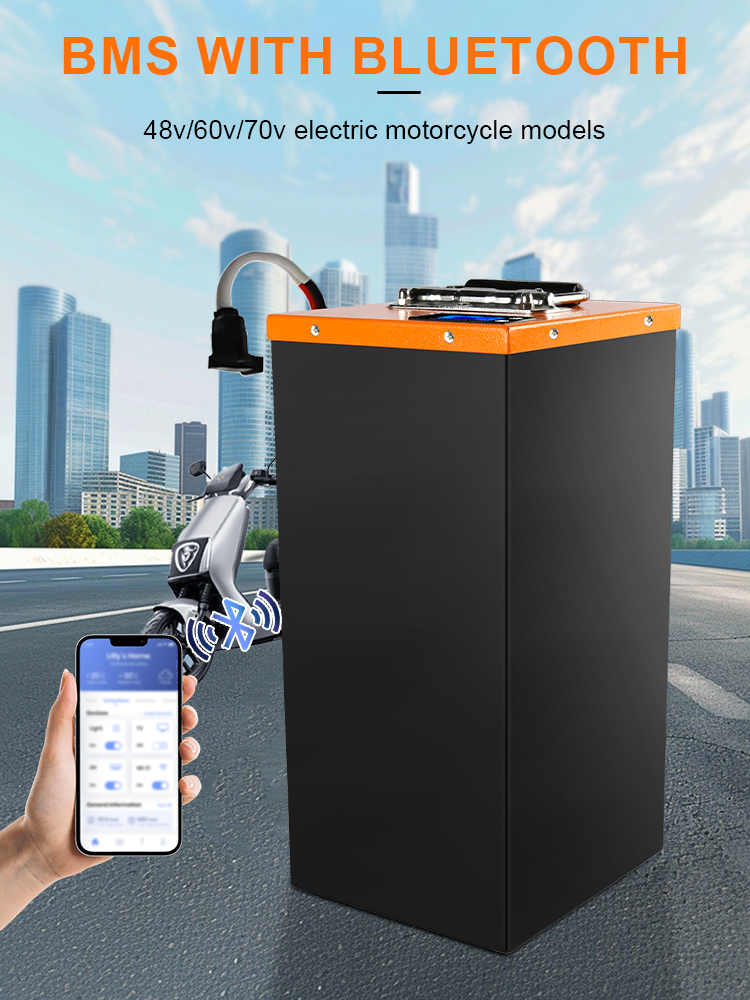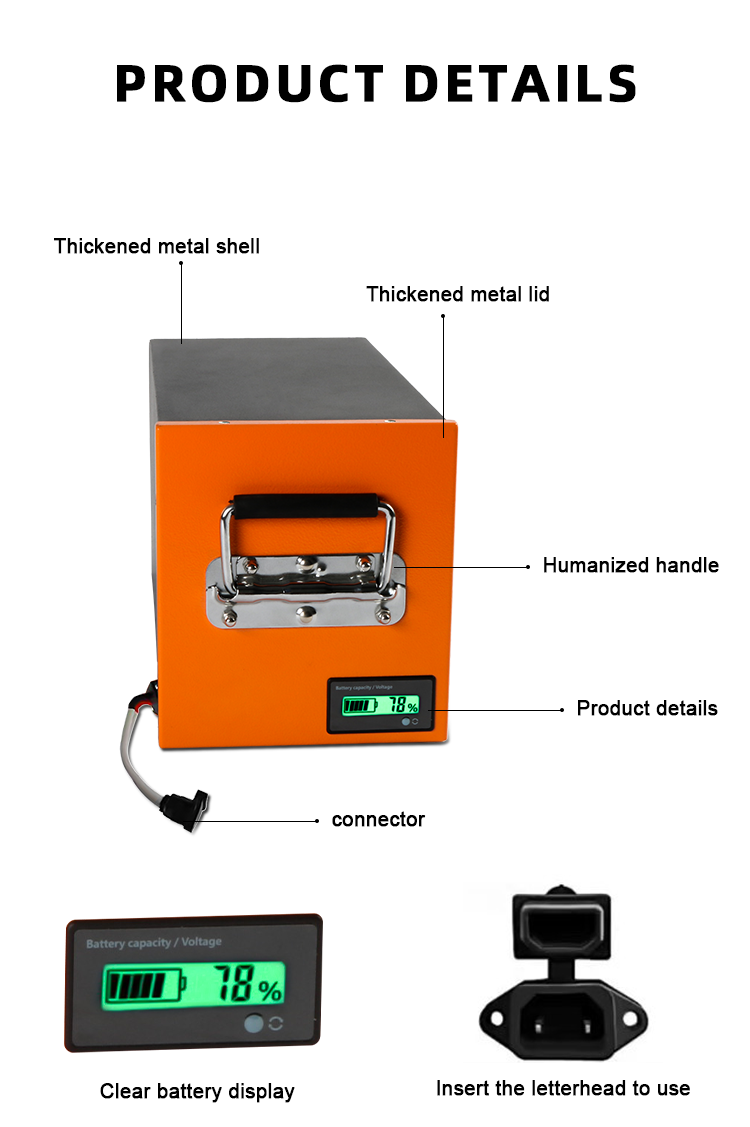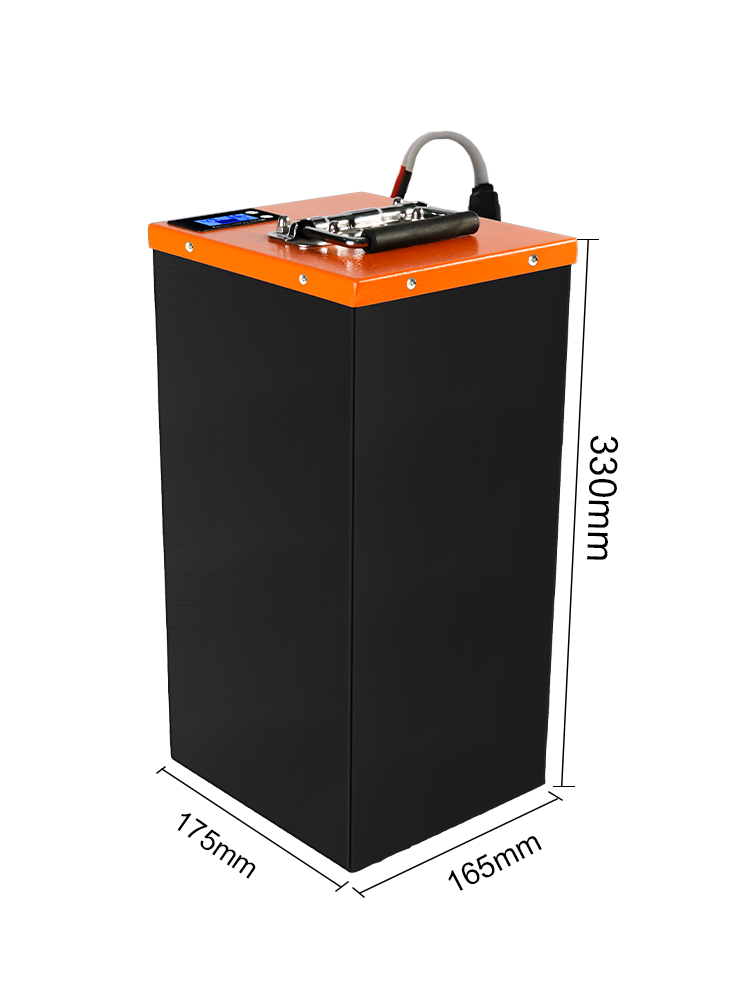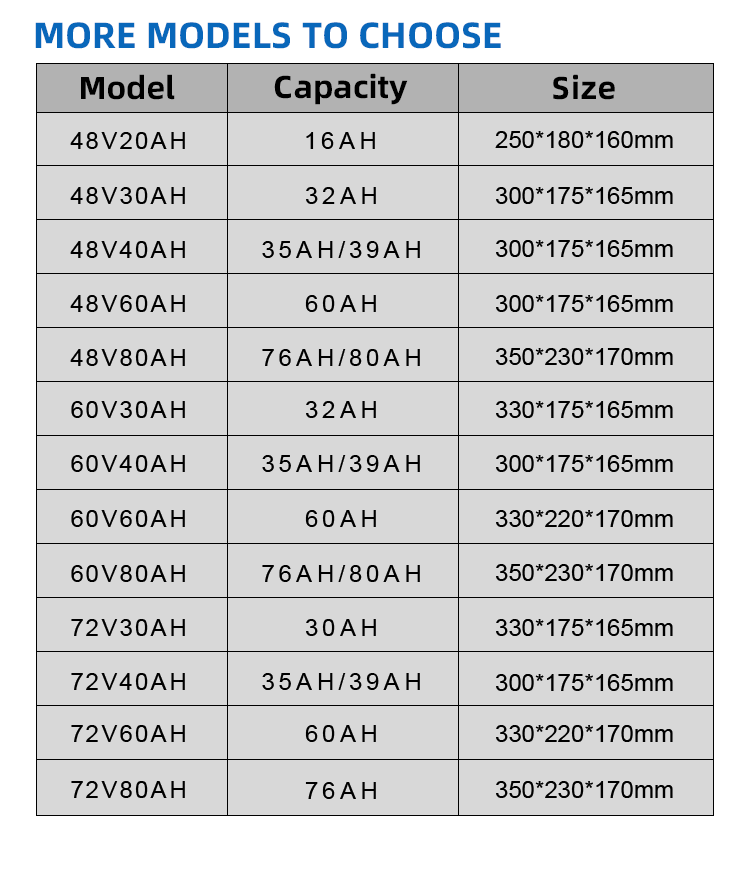Here’s the detailed information about 48V 40Ah in terms of voltage, capacity, energy, and typical applications:
1. Voltage (48V)

-
Common standard for electric bikes (e-bikes), scooters, small EVs, golf carts, and some energy storage systems.
-
Higher voltage = more power and efficiency compared to lower voltages (e.g., 24V or 36V).
2. Capacity (40Ah)
-
Amp-hours (Ah) measure the battery’s charge capacity.
-
40Ah means the battery can deliver:
-
40A for 1 hour,
-
20A for 2 hours,
-
1A for 40 hours, etc.
-
3. Energy (Wh)
-
Watt-hours (Wh) = Voltage (V) × Capacity (Ah)
-
48V × 40Ah = 1,920Wh (~1.92 kWh).
-
This indicates how much energy the battery can store.
4. Range Estimation (for E-Bikes/Scooters)
-
Depends on motor power, terrain, and rider weight.
-
Example: A 500W motor using a 48V 40Ah battery:
-
Theoretical range:
1,920�ℎ500�=3.84 hours of runtime
At 25 km/h (15.5 mph), range ≈ 96 km (60 miles).
-
-
Real-world range: ~50–80 km due to inefficiencies.
5. Battery Type
-
Lithium-ion (LiFePO4 preferred):
-
Lightweight, long cycle life (~2,000 cycles).
-
Common in e-bikes/scooters.
-
-
Lead-acid (rare for 40Ah at 48V):
-
Cheaper but heavier and shorter-lived.
-
6. Charging Time
-
Lithium-ion:
-
With a standard 5A charger: 40�ℎ5�=8 hours.
-
Faster chargers (e.g., 10A) reduce time but may shorten battery life.

-
7. Weight
-
Lithium-ion: ~15–20 kg (33–44 lbs).
-
Lead-acid: ~25–30 kg (55–66 lbs).

8. Applications
-
E-bikes/scooters: Extended range for commuting.
-
Golf carts/Utility vehicles: Power for longer use.
-
Solar storage: Off-grid or backup power.
9. Price Range
-
Lithium-ion: $300–$500 (varies by brand, BMS quality).
-
Lead-acid: $100–$200 (but less efficient).
10. Lifespan
-
Li-ion: 5+ years (with proper care).
-
Lead-acid: 1–2 years.
Let me know if you’d like help calculating range for a specific motor or comparing battery types!


 1688
1688


